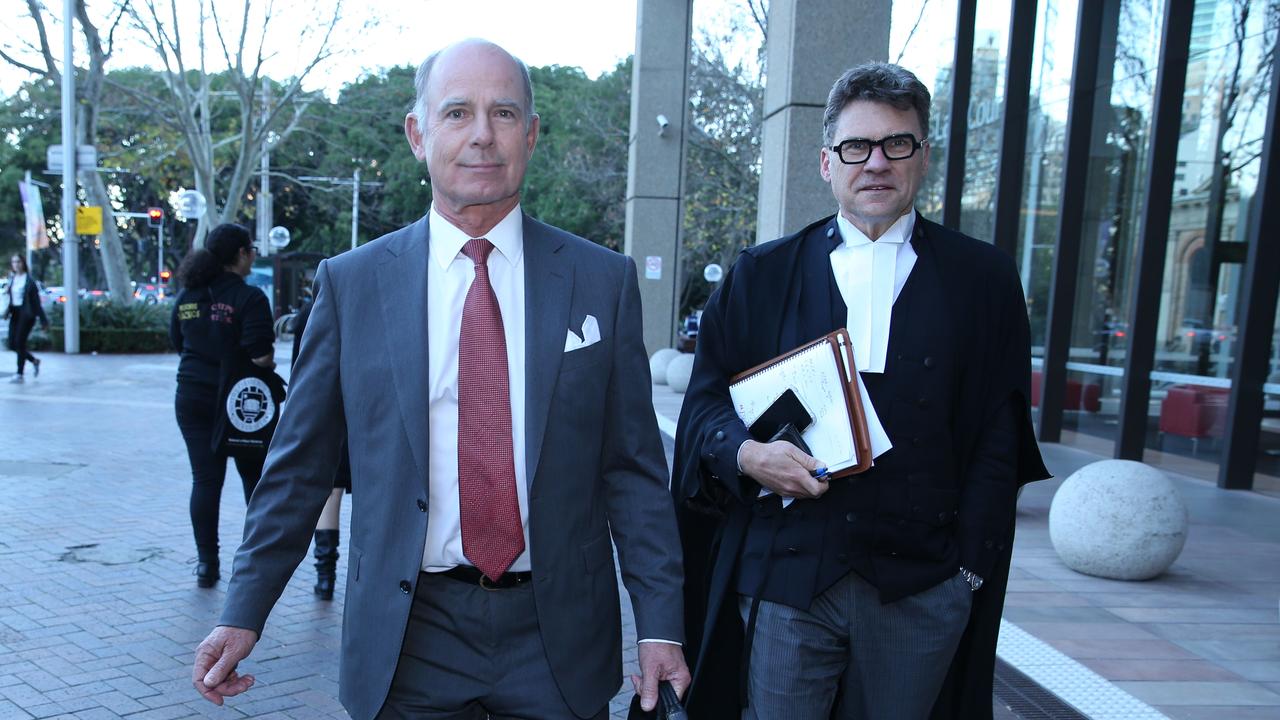Investor losses due to IOOF failure to disclose misconduct, court told
The barrister for disgruntled shareholders of the old IOOF has told the court investors suffered losses because the firm did not disclose internal misconduct to the market.

Business
Don't miss out on the headlines from Business. Followed categories will be added to My News.
Michael Hodge, the barrister acting for disgruntled shareholders suing Insignia Financial - previously known as IOOF - finished two days of opening arguments attempting to convince justice Stewart Anderson that material misconduct was withheld from, and caused losses to, shareholders between March 2014 and July 2015.
The allegations in the class action lawsuit brought by Shine Lawyers came to light after a June 2015 article by the Sydney Morning Herald reported IOOF had failed to inform regulators after it caught a senior employee involved in insider trading.
That led to a 13.3 per cent fall in its shares to $1.42 each - its largest ever single-day fall at that point.
Days later, former managing director Chris Kelaher appeared at a senate hearing, where he said he was aware of allegations of serious misconduct by the research department, including insider trading, misrepresentation of performance figures, unit pricing errors, faulty research reports, and juniors told to cheat on training and compliance exams on behalf of their boss.
Mr Hodge, who in 2018 acted as counsel assisting the Hayne royal inquiry that also aired misconduct at IOOF, sought to convince the judge there were “serious issues within IOOF that affected materially its value and that it ought to have disclosed,” he said.
Justice Anderson said the company had argued that what caused the damage to the company’s share price had been the “sensationalist language” and the allegations of the newspaper articles, which the company argues “depart” from the actual issues that were known to the company.
“That’s where the rubber hits the road on those submissions as I understand what the respondent is putting against you,” Judge Anderson said.
Mr Hodge said that the conclusion from an expert engaged by the plaintiff was that the “serious issues” known to the company “lines up” with the things that appear in the newspaper articles.
“He expresses the view that - although the information of interest and the information disclosed to the market are different in terms of wording and the level of detail, the nature of the information is the same,” he said, adding that parts of that “conveyed the same type of misconduct or risk”.
“There is a substantial equivalent between the nature of the issues revealed by this trawling through IOOF’s internal documents and the nature of the issues that are revealed by the publications made by Fairfax (then publisher of the SMH) and then Mr Kelaher’s appearance before the senate committee,” Hodge added.
He argued that IOOF’s “proposition” that there needed to be “complete accordance” between both sets of information - the “pleaded non disclosed information” in one hand, and the information disclosed by the newspaper articles in the other - was “wrong”.
“It’s not analytically the way your honour has to approach the task. Your honour has to start with the question of: Is there a contravention? … Is there material information that isn’t disclosed?” he said. “And then the second part of it is to ask: is there loss?”
“What we have pleaded and what we’ll prove is that … this internal information is substantively conveyed by the media articles and by Mr Kelaher’s testimony, and there’s an observable drop in the share price positively, it’s in our submission, only explicable by the disclosure of the information.”

“Therefore it is going to follow that there is loss. And then the question will be the third stage of assessment of loss.”
Justice Anderson then said IOOF was also arguing that the alleged non disclosed information falls within an exception from ASX listing rule 3.1A and therefore it was not required to be disclosed because it was prepared for internal management purposes by IOOF and was confidential “and a reasonable person would not have expected the information to have been disclosed.”
To that, Mr Hodge said that IOOF’s proposition that “somehow, even if this information is true, even if it is apparent that there were problems with IOOF’s systems and compliance and conflict management, and this issue with (head of advice research Peter Hitlon) sitting at the top of research and the inability of them to ensure compliance of their research department, nevertheless, that’s not information that a reasonable person would have expected to be disclosed to the market, it’s ….”
Mr Anderson interrupted him to say “. falls well outside the exception”. “Yes” Mr Hodge said. “Understand” Judge Anderson responded.
Justice Anderson will hear IOOF’s barrister opening statement for the next two days starting Wednesday morning.
A spokeswoman for Insignia said it will “vigorously defend the claim and is looking forward to having the matter heard and determined”.
“This case relates to events that are alleged to have occurred more than 7 years ago and in some cases nearly 15 years ago,” she said.
“Because the claim is currently before the Court, Insignia Financial does not propose to comment further.”
Originally published as Investor losses due to IOOF failure to disclose misconduct, court told






